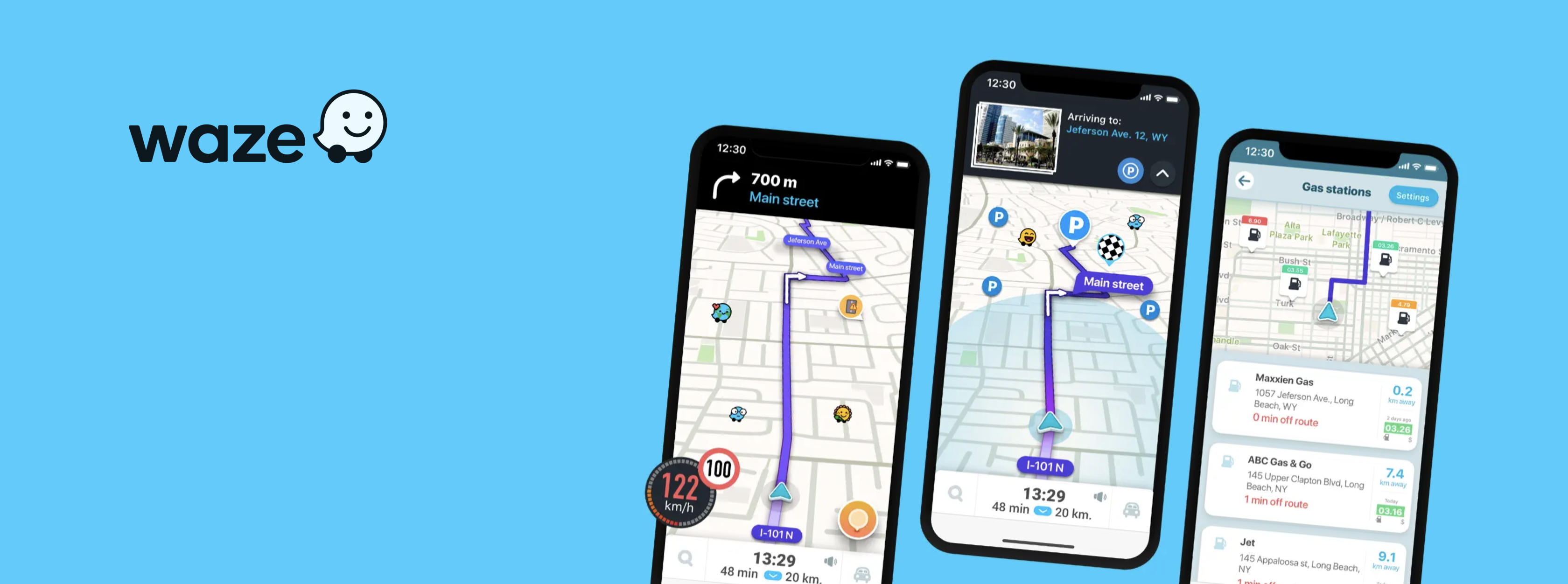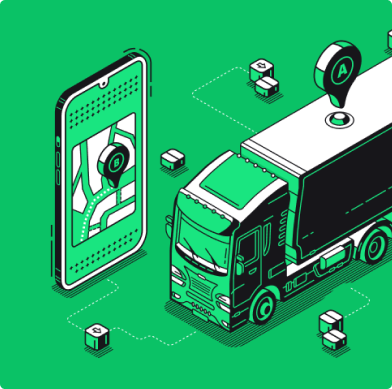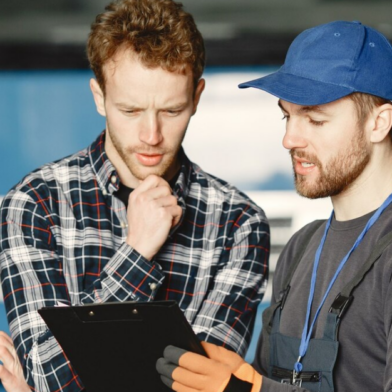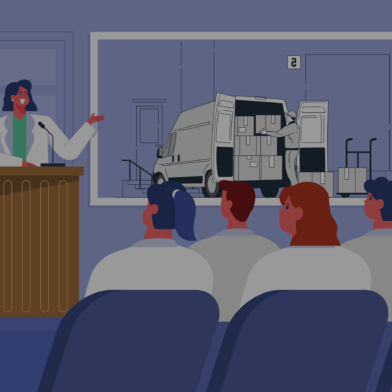Do you have a startup idea and wondering how to develop an app like Waze?
The navigation app market has seen unprecedented growth in revenue over the past decade. According to Statista, the navigation segment will witness an annual growth rate of 7.00%, with a projected profit of over US$1.61bn by 2027.
Revenue in the navigation app market
Waze alone is garnering $97.3M in annual revenue. The company has been able to achieve this feat because of its unique approach to building a community around its users’ location data. Waze allows users to share information about everything they encounter along the way and then uses it to show the fastest route between two points.
To triumph in this lucrative market, it’s important to understand what makes a good navigation app and how you can make your app stand out from the competition.
In this guide, we’ll walk you through the process of building a custom GPS navigation app like Waze. You’ll learn about everything from the design and app development process to the key features, the costs involved, and the challenges you may encounter.
At Volpis, we have helped many startup owners bring their app ideas to life. Road Hunter is a recent example of an inspiring success story. If you have any questions after reading this article, we’d be happy to answer them during the free consultation.
How to develop an app like Waze and launch a profitable startup
It’s important to keep in mind that developing a GPS navigation app that is identical to Waze may not be the best approach. Creating an application that is too similar could lead to difficulties in setting your app apart from the competition in a saturated market.
Given the enormous amount of resources they have dedicated to both app development and marketing, it would be extremely challenging to compete with the Waze mobile app. Simply copying their product will not guarantee the ability to attract their loyal user base.
Instead, you may want to consider creating an app with similar features, while still offering a unique perspective. In Waze’s case, it is a community-based approach that has helped create a database of millions of users’ information. Considering its real-time traffic updates and user-based reporting, many drivers are in search of a Waze like app to assist with their daily commute.
So, let’s take a look at the key steps involved in custom navigation app development and what it takes to create an app with the potential to revolutionize the way people navigate through traffic.
Step 1: Distinguishing your idea amidst fierce competition
Before starting to develop a navigation app like Waze, it is important to identify how your app will be differentiated from the Waze app and other competitors. You should conduct research to identify any gaps or unmet needs in the navigation apps market and consider ways in which your GPS navigation app can address those gaps.
For example, you may decide to focus on providing more personalized navigation options, such as allowing users to select routes based on their preferred scenery, speed limits, or other factors. Alternatively, you may decide to incorporate augmented reality or another cutting-edge technology stack to provide a more immersive and engaging navigation experience.
Step 2: The discovery phase
Once you have identified your app’s unique value proposition, the next step is to conduct a discovery phase. This involves defining the scope of the project, conducting a competitive analysis, defining the tech stack (such as programming language), and creating wireframes.
Step 3: UX/UI design
Once the scope of the project has been defined and the tech stack has been selected, the next step is to design the user interface and user experience of your app. The UX/UI design stage involves creating a visual design that is aesthetically pleasing and intuitive.
Step 4: MVP development
The fourth step involves developing a Minimum Viable Product (MVP), which is a simplified version of the app that includes only the key features required for its basic functionality. The MVP serves as a starting point to build the full-fledged app, allowing the navigation app development team to test, validate, and get the first feedback from the target audience.
Step 5: Quality assurance
During this stage, the quality assurance team tests the app’s performance, examines its behavior under different scenarios, and identifies any potential issues. They also assess the app’s compatibility with different mobile devices, operating systems, and phone screen sizes to ensure a seamless user experience across all platforms.
Step 6: Deployment
During deployment, the development team prepares the app for release by ensuring that it meets all necessary standards. Once the app is ready, the team submits it to the appropriate app store (such as the Apple app store or Google Play Store ) or distribution platform, such as Google Play or the App Store, and follows the necessary procedures for app publication.
Step 7: App maintenance and scaling up
After the app is released, the development team will continue to work on expanding its functionality based on user feedback and improving its performance to meet evolving needs. The team will also provide post-release support to address any issues or concerns that users may have.
We are excited to provide you with strategies for developing a successful navigation app, tailored to your specific objectives. Ultimately, our goal is to ensure that you have all the information you need to make informed decisions. So, feel free to reach out to us to schedule a free consultation at your convenience.
What makes Waze so popular
Waze is loved by millions of people. 150 million, to be exact. The app has gained immense popularity due to its innovative community-based approach, which involves active participation from its users.
Waze, acquired by Google in 2013, offers real-time user-generated navigation updates and alerts, complementing the more traditional map services provided by Google Maps. Although both Waze and Google Maps are owned by Google, they serve slightly different purposes: while Google Maps is excellent for general navigation and location searches, Waze focuses on offering real-time traffic updates and alerts reported by its active community of users (for example, about traffic jams).
GPS technology (aka Global Positioning System) is used in the Waze app to get your position and display it on the map. However, unlike other GPS applications that rely on official data sources, the Waze app allows its users to contribute by updating the map and reporting traffic conditions. All this enabled the app to ensure that users have access to the most recent and reliable information possible.
Moreover, such features as the ability to connect with friends and see their estimated time of arrival, make users feel like they are part of a collaborative effort to make their daily commute safer and more efficient.
Waze allows users to earn points and badges and offers playful animations and sound effects that enhance the user experience.
All of these elements have contributed to Waze’s position as one of the most popular GPS tracking apps worldwide. It combines the best of both worlds—real-time information from users with algorithms that sift through that data to offer useful updates.
Waze has set itself apart from other GPS navigation apps by prioritizing user engagement, accuracy, and people involvement.
Main features of Waze
Waze is a successful GPS navigation app that offers users a range of real-time information, such as traffic conditions, accidents, and police presence. This app is a brilliant example of cross-platform mobile development, as it provides seamless navigation and real-time traffic updates for users across both iOS and Android operating systems. Waze is favored for its following features:
- Live traffic updates
This app uses user-generated data to provide real-time information about traffic conditions, such as accidents, construction, and road closures.
- Voice-guided navigation
Waze navigation provides users with the convenience of voice directions, enabling them to maintain their focus on the road and drive safely.
- Social media integration
Waze offers social network integration. The navigation app allows people to connect with friends and family, enabling them to view user location on the map and share estimated time of arrival (ETA) with them.
- Points of interest
With Waze, users can access information on nearby restaurants, shops, gas stations, museums, etc. In addition, users can read reviews and ratings from other Waze users to make informed decisions about their destinations.
- User profiles
Waze provides a page for users to see their personal information. This allows for a more personalized and social experience within the Waze community.
- Customization
Waze navigation offers users the flexibility to select their navigation voice, map color, and change other settings. Users can choose from a variety of voices, including celebrity voices, to make their driving experience more enjoyable and tailored to their preferences.
- Gamification
Waze rewards user participation through gamification features such as a point system, badges, leaderboards, and challenges. Users can earn points by contributing to the community, such as reporting hazards, providing real-time traffic updates, and suggesting edits to map data.
- Integration with music services
Waze users can conveniently control their music within the GPS app, thanks to its integration with popular music streaming services like Spotify.
- Synchronization with Google Calendar
By syncing Waze with Google Calendar, users can integrate their calendar events into the app’s navigation system. This feature ensures that users receive timely reminders and can plan their routes accordingly.
- Carpooling
For those seeking ridesharing options, Waze provides a carpool feature that connects them with other individuals heading in the same direction. This not only helps reduce traffic congestion but also promotes cost-sharing and environmental sustainability.
- Push notifications
Waze sends push notifications to inform users about road closures. These notifications provide real-time updates and allow users to adjust their routes, saving them time and avoiding potential traffic delays.
- Speedometer
Waze users can monitor their speed limit in a specific area and receive alerts if they exceed the limit, promoting safer driving.
- Community-generated data
Drivers can avoid potential issues on the road, thanks to Waze’s feature that allows users to report incidents such as traffic jams, accidents, and police speed traps, thereby contributing to the community.
- Lane guidance
To help drivers navigate complex intersections and highway exits, Waze offers lane guidance features.
- Offline maps
Users can download maps for offline use in areas with poor cellular coverage, ensuring uninterrupted navigation.
- Real-time map editing
Waze’s real-time map editing feature enables users to add new roads and landmarks to the app’s database as they discover them.
- Support for Apple CarPlay and Android Auto
With support for both Apple CarPlay and Android Auto, users can access Waze’s features directly from their car’s infotainment system.
How much does it cost to develop a navigation app like Waze?
The expenses involved in creating GPS applications similar to Waze differ depending on the intricacy of the app, the incorporated functionalities, the platform used, and the location of the development team.
A simple navigation app with basic features may require a budget ranging from $20,000 to $50,000, whereas a complex application may cost up to $100,000.
If you’re thinking about outsourcing, you can contact our experts. We would be delighted to offer you an accurate quote.
The most common problems of navigation apps
Users may encounter a range of issues that can potentially disrupt their journey and undermine the overall navigation experience. Issues that may arise when using a GPS navigation app like Waze include:
- Inaccurate directions
Sometimes, a GPS app can provide incorrect directions, which can result in getting lost or delayed. This is especially problematic in areas where roads have recently changed or in complex intersections.
- Technical issues
Technical problems, such as crashing or freezing, can be exasperating for users. Continuous updates and bug fixes from the app developer are essential for maintaining the application’s stability and performance.
- Battery drainage
GPS apps consume a significant amount of battery power, resulting in faster battery depletion. This can leave users without a functional device in situations where they need it the most, like long trips.
- Data usage
Navigation apps need extensive data for providing real-time traffic updates, which can be problematic for users with limited data plans. It can result in additional charges or throttled speeds once the data limit is exceeded.
- GPS technology-related issues
The GPS doesn’t need an Internet connection to work, however, a weak GPS signal can affect the accuracy of location data and lead to inaccurate directions. This can be particularly troublesome in areas with tall buildings, dense forests, or other structures that may obstruct the GPS signal.
- Limited coverage
In some regions, GPS apps may have restricted coverage, leading to incomplete or imprecise data. This is a significant issue for users in remote areas or in regions where the app’s map data is not fully detailed.
- Safety concerns:
A navigation app can distract drivers, and therefore, it is imperative to use it responsibly. In order to mitigate this issue, most apps offer voice-guided directions so that drivers can keep their eyes on the road.
How our company helps startup owners build robust navigation apps
Volpis is a mobile app development company with extensive expertise in navigation app development. Our team can resolve all of the problems mentioned above.
For example, recently we developed the RoadHunter, a system for truck drivers which currently boasts a user base exceeding 200,000.
Apart from the typical capabilities found in a navigation app (such as voice instructions, turn-by-turn directions, real-time traffic updates, offline maps, live map editing, and lane guidance), RoadHunter offers a range of advanced features including personalized POIs and custom routes for truck drivers.
If you need help building an app similar to Waze, please contact our team. We specialize in navigation & mapping apps and can develop a custom solution.
Develop a profitable app with a unique edge
By having a trusted app development partner, you can transform your idea into a market-leading app. And that’s why we’re here.
Our team can work with you to determine what is most important for your project and how it can be implemented. Our team specializes in both Android and iOS development, utilizing a wealth of experience and cutting-edge techniques to create seamless, user-friendly applications for both platforms.
For example, when you need to add mapping capabilities, there are two main options: Mapbox and Google Maps API. But what to choose in your case? What would be more cost-efficient and cover all your needs? We’re always happy to share with you our expertise in choosing the right technology stack.
If you have any questions or concerns, please contact us via info@volpis.com or fill out the form.
Frequently asked questions
For the Android version of the app, programming is typically done using Kotlin, while iOS GPS navigation apps are developed using Swift. Additionally, developers should be proficient in using various tools, such as Google Maps API that allows developers to integrate and customize maps within their own applications, enabling users to visualize data in a geographical context and interact with real-world locations. More information about needed technologies, you can find in this guide.
In the realm of GPS app development, Waze has set a high standard by incorporating real-time traffic updates and community-driven alerts, making navigation more efficient and user-friendly. To stand out and attract users, a new GPS app can offer unique features, focus on user experience, create a community of users, offer rewards and incentives, and partner with other businesses.
Developing the core functionality will take approximately 2-3 months while creating a full replica will require around 6 months. Everything depends on the complexity of your project, how many features you plan to include, the platforms your application is being developed for, and the hourly rates of the team. Keep in mind that developing a complete copy of an existing GPS app will lead to copyright infringement.

Kostya Khuta, the CEO of Volpis, is an expert in crafting custom software solutions for the Fleet Management, Logistics, and Transportation industry. With over 8 years of experience, he leads the way in delivering innovative and tailored solutions to meet industry-specific needs.





